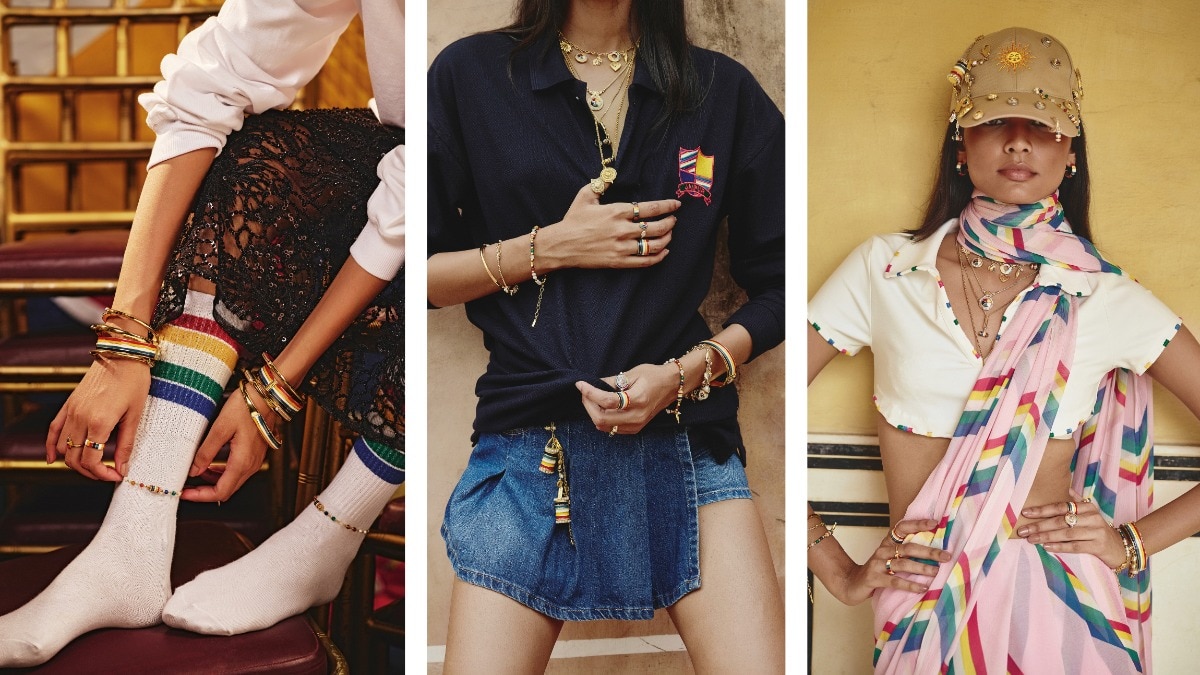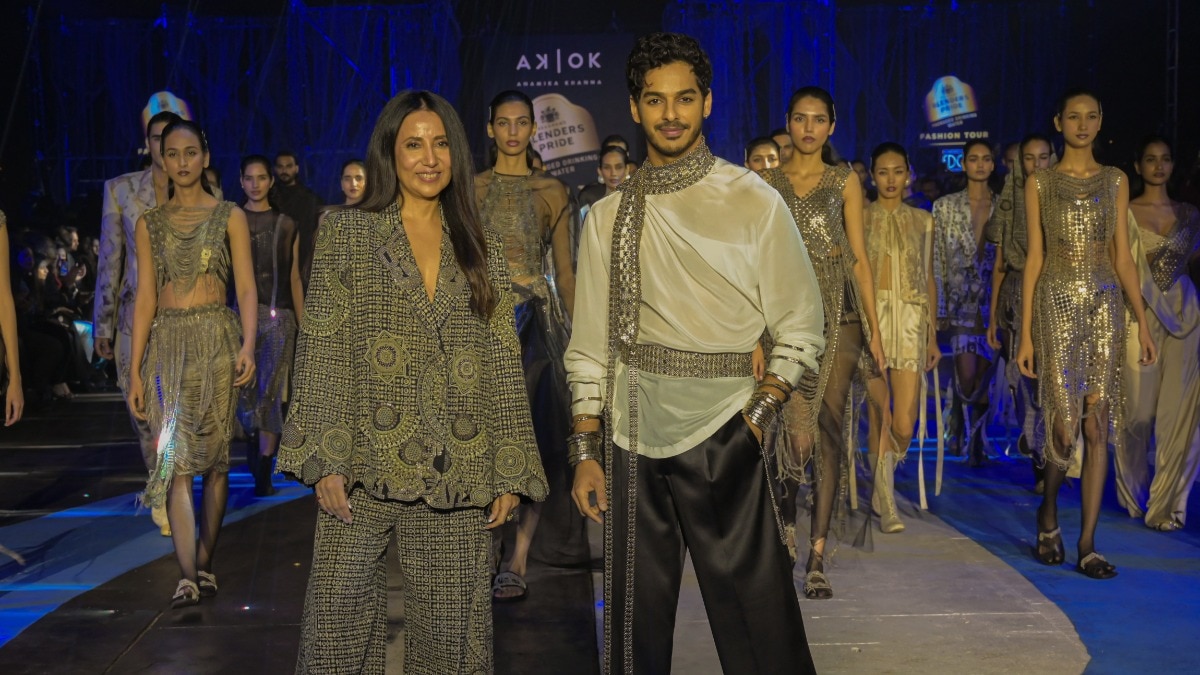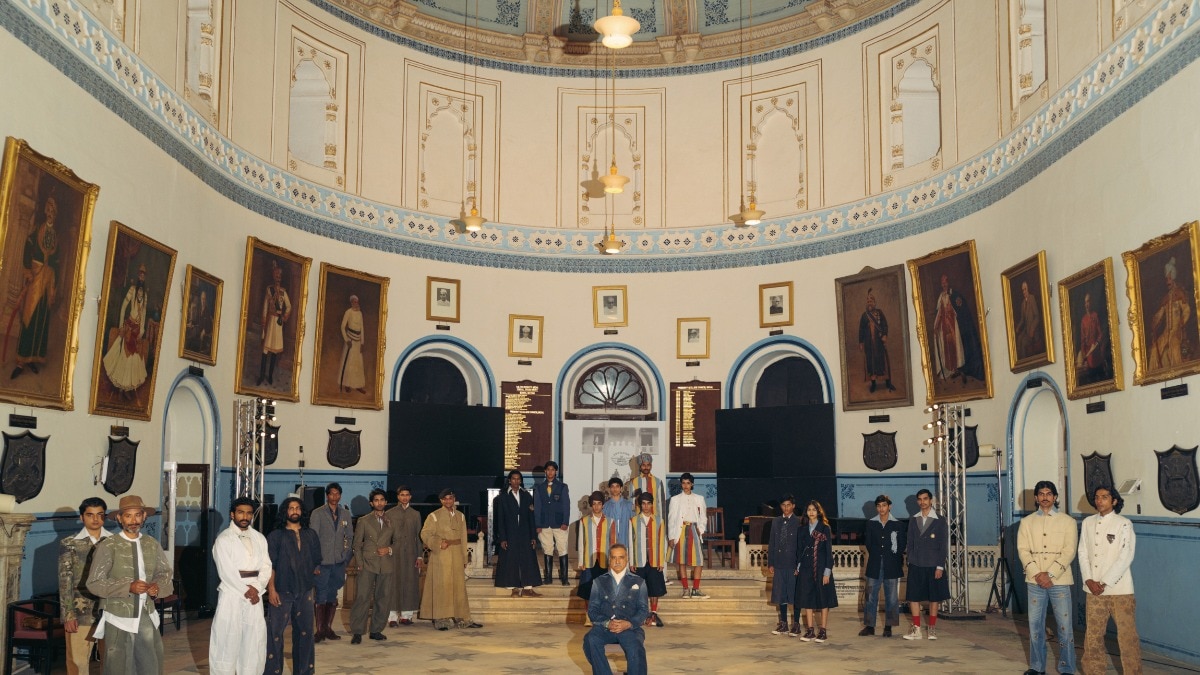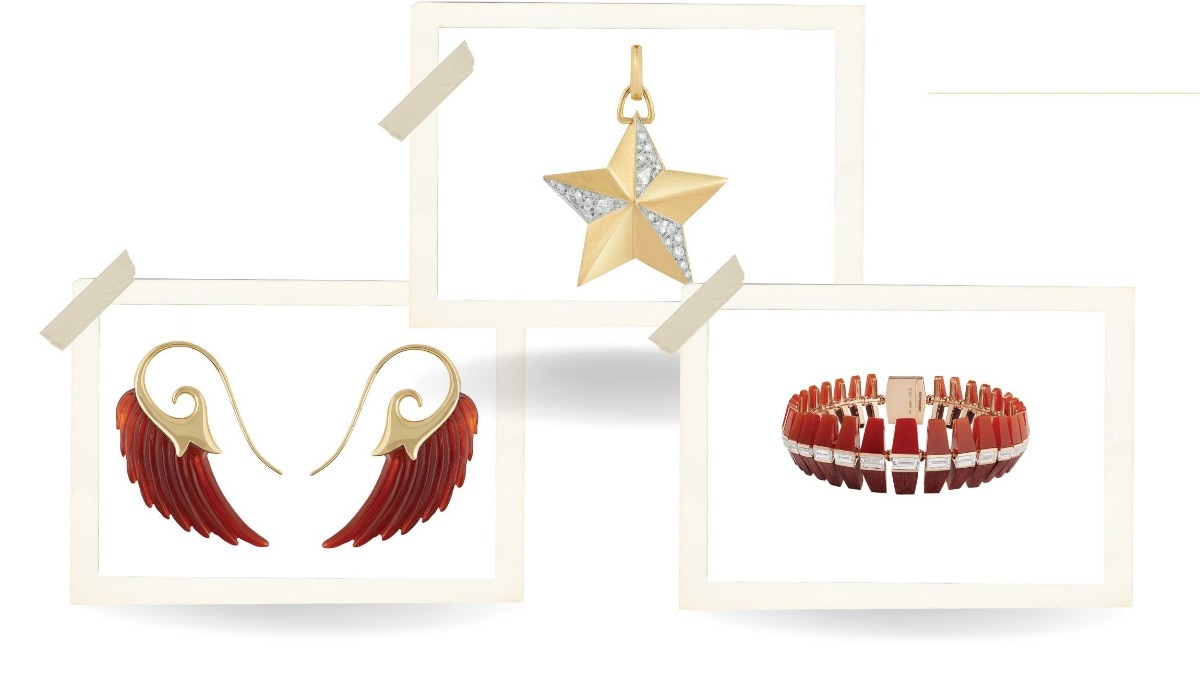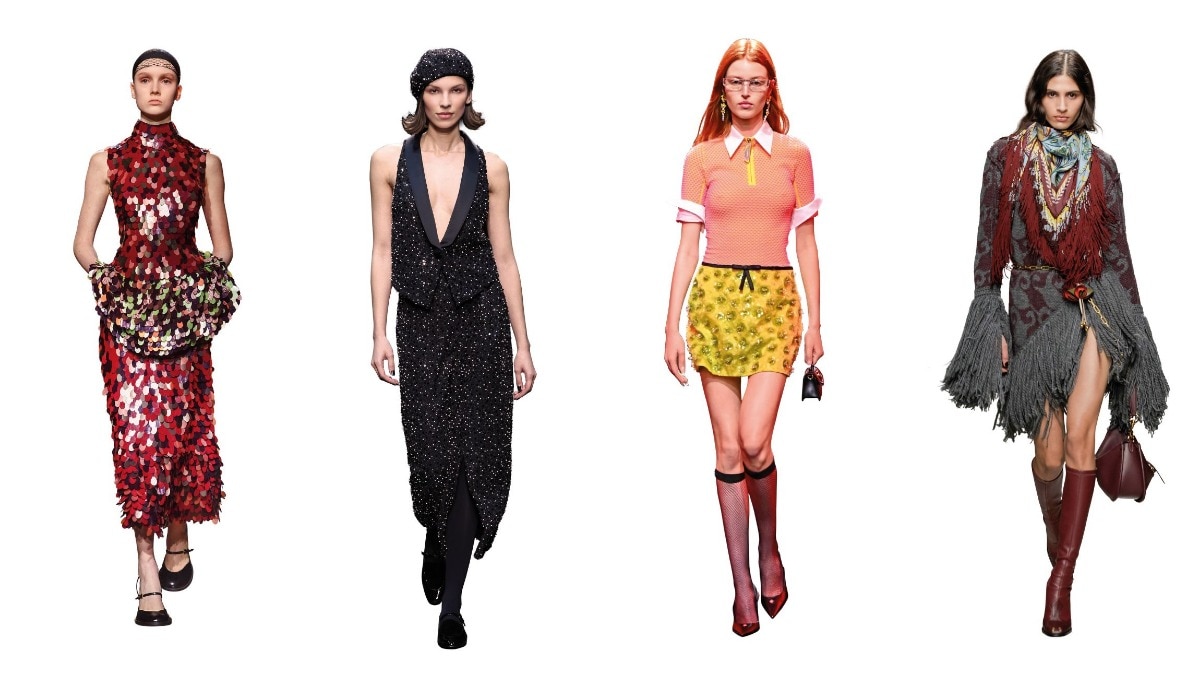
péro atelier's Aneeth Arora lets us in on the brand's craft-centric ethos, their Heartsong collection, and more
On a visit to péro atelier, we take a closer look at the designer's methodical madness as the brand turns 15.

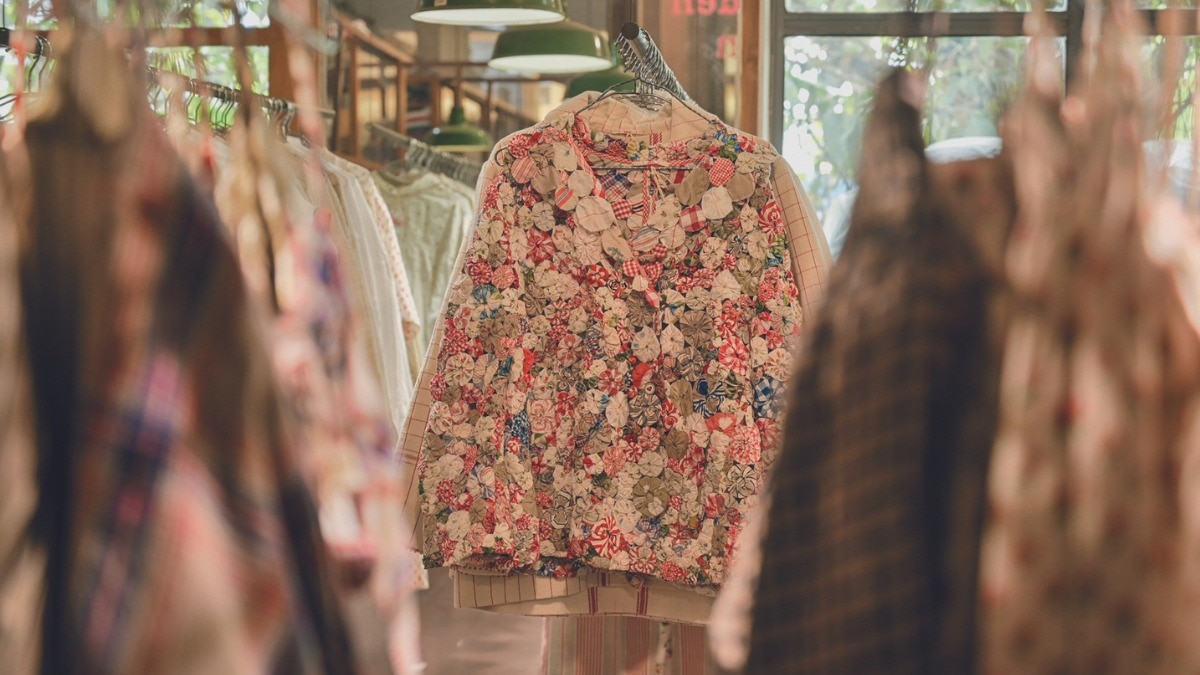
In the middle of June, on a sweltering afternoon, I made my way to the péro atelier in Patparganj, Delhi. A bright red letterbox next to the entrance felt like a portal of sorts, and before I could comprehend anything, I was transported to a wonderland—or should I say ‘péroland’ where I cribbed less about the Delhi heat for the next few hours. Quirky clay figures lined the window, a wall with heart-shaped souvenirs (gifted by clients all over the world), a stack of catalogues of old and new collections in one corner, the signature péro dolls, an expansive library packed with books of varied interests—this is where all the magic unfolds, I was convinced.

Aneeth Arora, the founder of péro, is one of the best storytellers of the Indian fashion industry. From the clothes she makes to the shows and campaigns she conceives, trust her to blur the lines between reality and fantasy. Arora’s design vocabulary and visual presentations are synonymous with vintage, quirk, and nostalgia. It’s no less of a mystery how she blends effortless elegance with exaggerated prints, patterns, proportions, and intricate surface ornamentations—often breaking gendered boundaries of dressing. “I have never called myself a fashion designer, and till date we stay true to the fact that we design textiles, and then make clothes for people at péro. We have always made clothes that are comfortable, not necessarily tailored for an occasion but made to feel special throughout the day. In fact, I was also labelled the culprit for introducing anti-fit into fashion because my clothes were neither body-hugging silhouettes nor had embellishments on them. The first line that we ever did was naturally dyed, hand-woven textiles from India. The only embellishment was a handmade button which had ‘péro’ embossed on it,” recalls Arora.
Adding to her methodical madness, Arora is known to be extremely private but not reclusive. In contrast to the exuberant brand identity, she politely refuses to put herself in the spotlight—you will be denied photographs and videos of her. “Why should one person bag the limelight? It’s a collective effort, and I don’t think an individual should take the credit. Of course, I am the spokesperson of the brand, and I love talking about the hard work that everybody puts in. But I never felt the need to be known as the face of the brand,” explains Arora.
Earlier in March, I approached Arora’s team to share a sketch and was informed that the brand doesn’t make one. “Even as a student at NIFT (Mumbai), when we were asked to draw a croquis or make a fashion illustration, I never related to the manipulation of the human body. I’ve always been very tactile with the process. It all began when I was travelling to the villages as a student. I would appreciate someone’s attire and humbly request them if they could lend me their clothes, as I wanted to study. Or I would buy them a new one and take their old piece. Since I was always interested in how those clothes were made, a sketch wasn’t enough to construct, there’s only so much detail one can express. Similarly,a péro garment has a lot of details—whether it’s the inside seams or a little heart somewhere. How much can a sketch incorporate within itself?” the designer asks a rhetorical question.
Being an avid collector, Arora brings back textiles, costumes, and pieces of clothes from her travels. These form the foreground of her research process.“We analyse these clothes on the table and decide how to cut it. Sometimes when I don’t have these pieces, I turn to the books in my library. We study a garment, and then do a péro take to see how we can manipulate it.The whole approach has always been very hands-on, where a piece or a visual is on the table and we brainstorm on how to make it the péro way. I have never felt that I’m missing sketching, especially because my job is also not about just sitting at a table. It encompasses looking at things, making changes, and coming up with solutions. I rather enjoy the process. I’m extremely unapologetic about it, and stand by the ideologies—we are not going to be photographed, we don’t do sketches, and we don’t make moodboards,” Arora tells Bazaar India.

The brand believes in the two extreme worlds—one is to be consistent with what they have established as a brand, the other is to keep their minds open, and be ready to offer something fresh to their patrons. Inspiration can be anything for Arora, be it a button, a colour or a painting. “For instance, while conceptualising the Heartsong collection, the only thing that I knew was we were going to work with vintage French textiles. Some of the processes are extremely rigorous, and we follow hem religiously. Whereas, towards the end of it there’s a childlike take on things and (we) don’t follow rules.There’s at least two months of research that goes into deciding a theme, and we work two years in advance for any collection. Since we follow an extensive process—researching, designing our textiles, and then applying embellishments to it—people observe a certain kind of consistency in the product. Take the péro button—it’s a different colour every time. The trim on the scarf changes every season. We do checks but innovate every time. There are floral elements, but we take a different flower each season. We work with the same craft clusters because they are also going from strength to strength with us. They’ve reached the stage where they understand the brand language and deliver within our philosophy.” For Arora, chaos and control coexist, and her patrons see that consistency in what she does.


A tour of the atelier cements Arora’s inventive, yet methodical approach—I closely observe a karigar making a floral khaka (drawing intricate motifs on a butter paper) which is then handed over to another artist, who paints over the khaka as per the colour mandate. On achieving the desired result,the motif is then printed on the choice of textiles and gets ready for the next step—surface ornamentation with intricate embroidered techniques.The textile is then tailored into a garment and goes through other stages—hemming, adding buttons, cleaning, and ironing.There are necessary checks at every step of the process to ensure the quality of the finished garment.

The Spring/Summer’24 collection of péro called Heartsong, is transportive of an idyllic French countryside and pays homage to the concept of slow living.Taking inspiration from vintage French textiles, the collection features relaxed, yet timeless silhouettes in French linen, hand-woven cottons, gabardine, taffeta silks, chanderi, and mashru. Classical techniques like hand-painted vintage floral prints, lace, toile, mesh, and cotton, classic petit point embroidery, beaded detailing, and cross stitch, form the highlight.Arora’s choice of flower Camellia,‘the flower of love’, is depicted through weaves, prints, embroidered bullion knots, hand crocheted surface ornamentations, and buttons.
Although péro uses pure textiles in ethical ways and recycles fabric waste, the core definition of sustainability for the brand is about creating sustainable livelihood.This got established back during Arora’s NID (Ahmedabad) days, on her travels to the villages and times spent with craftspeople to understand their thought process. She elaborates,“When we started the label, it was a conscious attempt to appreciate their craft and provide more work, season after season. I felt this to be my responsibility as a designer where I had to work with the same skill set and the craftspeople, but challenge myself and the design team to create something unique with the same cluster.We have grown to be a team of about 5,000 people, and keep adding new craft clusters every season, but also continue to work with the older ones. Since we have also diversified into different sections like home, kidswear, and menswear, we are able to absorb all these skill sets and build a sustainable model.”

The craft cluster of péro is spread across Rajasthan, Gujarat, Madhya Pradesh,West Bengal, Karnataka,to name a few,and all of these states are engaged with the brand through the craft that is significant to that region—from ikkat in the south of India,gamcha checks and jamdani from West Bengal,to chanderi and maheshwari from Madhya Pradesh. “It’s not restricted to textiles; our buttons are made in Rajasthan. There are nuns in Kochi who do laces and petit points for us.We also collaborate with Afghan refugee women who specialise in crochet work,” shares Arora. While every region in India stands for a particular textile or a craft, none of the péro garments screams of a particular technique from a region. “It’s always a sum total of every little thing that goes into its making. Eventually, it helps us to create a product that is a mix of a lot of Indian techniques, but is not an ethnic product.It’s a global product that makes sense anywhere in the world,” explains Arora.
For péro, offering traditional crafts to the world for 15 years bring a sense of achievement when international patrons look at a bandhni garment and identify the technique by its name. But that’s not enough for Arora. “I feel that we have a long way to go because India is still identified with embroideries. There is so much more that the country has to offer. We’ve just begun and all eyes are on us. There is a lot more scope now than it was 10 years back, because Indian designers, a lot of them have gone global, and people are seeing a lot of our traditional techniques. I feel that if we work together with craftspeople and present the most refined offerings to the world, people will start identifying almost all Indian crafts. And that will be the day to feel that we have made a global impact.”
So, what’s next for péro? I ask. “We are looking forward to working on an international collaboration very soon. I can’t reveal much about it now. But all I can say is that it’s going to be a big one for us. And apart from that, we are working to have a retail space to call our own soon,”Arora signs off.
All images: Shrey Arora
This article originally appeared in the Harper's Bazaar print June-July 2024 Issue.
Also Read: Elevate your workwear wardrobe with these statement pieces
Also Read: Perfect the quiet luxury look with these homegrown sustainable brands


